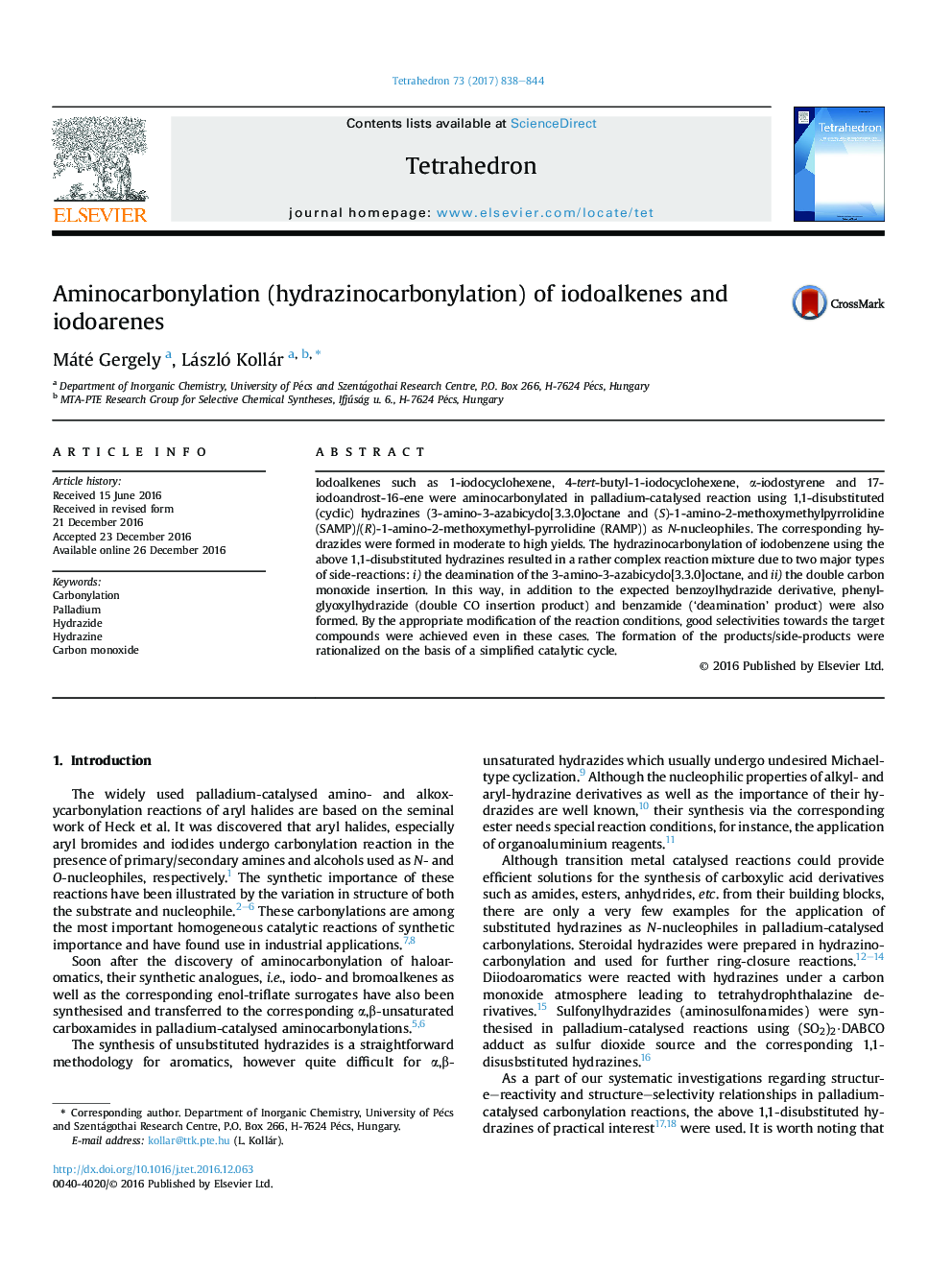| Article ID | Journal | Published Year | Pages | File Type |
|---|---|---|---|---|
| 5212916 | Tetrahedron | 2017 | 7 Pages |
Iodoalkenes such as 1-iodocyclohexene, 4-tert-butyl-1-iodocyclohexene, α-iodostyrene and 17-iodoandrost-16-ene were aminocarbonylated in palladium-catalysed reaction using 1,1-disubstituted (cyclic) hydrazines (3-amino-3-azabicyclo[3.3.0]octane and (S)-1-amino-2-methoxymethylpyrrolidine (SAMP)/(R)-1-amino-2-methoxymethyl-pyrrolidine (RAMP)) as N-nucleophiles. The corresponding hydrazides were formed in moderate to high yields. The hydrazinocarbonylation of iodobenzene using the above 1,1-disubstituted hydrazines resulted in a rather complex reaction mixture due to two major types of side-reactions: i) the deamination of the 3-amino-3-azabicyclo[3.3.0]octane, and ii) the double carbon monoxide insertion. In this way, in addition to the expected benzoylhydrazide derivative, phenylglyoxylhydrazide (double CO insertion product) and benzamide ('deamination' product) were also formed. By the appropriate modification of the reaction conditions, good selectivities towards the target compounds were achieved even in these cases. The formation of the products/side-products were rationalized on the basis of a simplified catalytic cycle.
Graphical abstractDownload high-res image (98KB)Download full-size image
